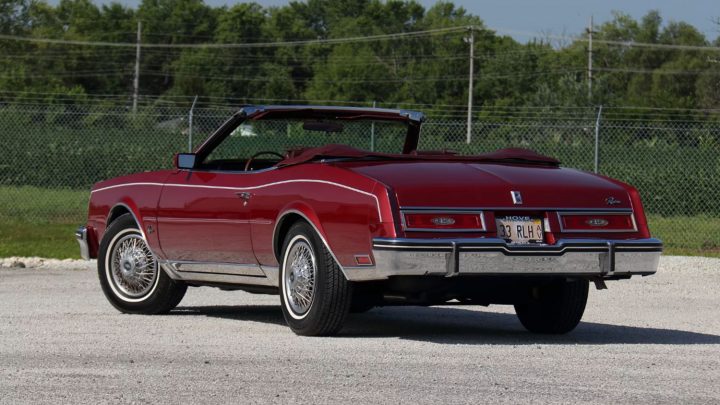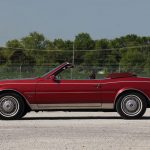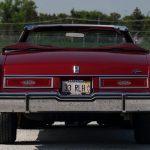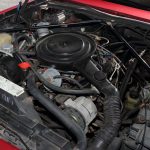In 1958, Harley J. Earl turned 65 years old. At that time, 65 was the mandatory retirement age for GM employees, and Earl was forced to retire as the head of GM styling. His successor was Bill Mitchell. As Earl had been a GM legend, Mitchell was anxious to make his mark as the new Vice President of GM’s Styling Section. One of his early projects would become the Buick Riviera.
The Buick Riviera didn’t initially have a home. The new personal luxury coupe was originally intended to be a Cadillac offering, but Cadillac already had a personal luxury coupe in the Eldorado. However, Buick needed an entry in the personal luxury vehicle segment.
Based on a shortened Electra frame, the Buick Riviera bowed in October 1962 for the 1963 model year. The Riviera (Italian for coastline) took its name from a previous Buick Roadmaster trim line. The new coupe was designed with a superior fit and finish in mind, so much so that the outer door skins were not installed until door and window fitment had been properly aligned. The Riviera was longer and 400 pounds lighter than its prime segment competitor, the Ford Thunderbird.
The Buick Riviera was well appointed with standard and available equipment. The capacious interior featured a dash cascade that morphed into a center console that continued rearward, bisecting the rear seat, creating large individual rear buckets. The center dash stack was home to separate heat and air conditioning controls, as well as the radio. Door panels came with both front and rear door handles so rear-seat passengers would not have to trouble those in the front to exit the car. Vinyl seating was standard, but leather could be specified. The options list also included power locks, power windows, power seats, cruise control, tilt steering column, AM-FM radio, and a remote trunk release.
By 1983, the Buick Riviera was nearing the end of its sixth generation. In 1979, the Riviera shifted to a front-wheel-drive platform, along with the Oldsmobile Toronado and Cadillac Eldorado. 1982 brought a first-time-ever Riviera convertible, with a nearly $24,000 sticker price (when a base Corvette was $18,290). Convertible Rivieras could only be had in White or Firemist Red.
Most Buick Riviera convertibles for 1983 were powered by the 307 cubic-inch Oldsmobile V8 producing 150 horsepower. A 410-horsepower twin-turbo version of the Riviera convertible paced the 1983 Indy 500. There was also a special-edition Riviera XX, marking the twentieth anniversary of the Riviera. The XX had two-tone paint, spoked wire wheels, leather, walnut interior trim, and gold-plated Riviera XX emblems.
Our feature 1983 Buick Riviera convertible is finished in Firemist Red with a white vinyl convertible top over a red leather interior. It is powered by a 5.0-liter V8 sending power to the front wheels through a four-speed automatic transmission. It is equipped with power windows, power locks, power convertible top, power driver’s seat, electronic climate control, AM-FM/cassette stereo, wire wheel covers, and whitewall tires.
This 1983 Buick Riviera convertible will cross the Mecum Auctions block at their Indy Fall Special taking place October 3rd through the 5th.



































Comments
Nice car! One step under a Cadillac.
Beautiful, but at the peak of the Malaise Era. The ’82 Monte Carlo I had at the time was one of the worst cars I’ve ever owned. Except for one lemon in the mid 90s and a Ford mess in the mid 70s, it was the worst.
That is the exception to the rule as the A/G body cars were out for 5 model years by this point and were generally quite reliable by this point. The main gas engines were the 229 V6 and 267 V8. Neither was a powerhouse but both were reliable smooth running mills and were generally attached to the 250/230 Turbo-hydromatic transmissions. The diesel was even improved to where it was more reliable. That’s not to say there were not lemons as we all know there were many back in the 70’s and 80’s. All of my many A/G body cars were good cars and very easy to service and keep going.
Stunning car. The 1979 to 1985 Riviera’s were always great looking cars and they (Eldo, Toro, Riv and Seville) are still some of my all time favorite for the front seat comfort and room. There is NOTHING like getting into these cars (bench seats) and having that flat floor. I love the dash designs in them all and this Riv shows how nice they are. Real or not, I love the wood trim.
I know pin stripes were the in thing back in those days, but this white stripe kind of stands out too much. What I noticed in the pics is that it really sticks out when the white top is down. But in the pics with the white top up, that stripe doesn’t look so bad. No matter, I’d love to have this car.
100 %
44 years later…I’m still in 💖 with my 1980 Loaded “RIV”! LOVED this car. Gas was sky high in ’84 out in CA and I had a sales territory that spanned from southern OR to Modesto CA🤑. Traded the “RIV” in for an Audi5000.
Should have kept my “RIV”😭. Wish GM would
revive the RIVIERA 🙏🏼❤️🙏🏼.
I’m currently driving a 2023 V6 AWD GMC Acadia after recently having my 2018 ACADIA Denali hit by someone running a RED 🚥 and totaling my fully loaded Acadia Denali 💥 the Best Acadia Denali GM made💖
The Rivs had some of the best styling of any GM or domestic car. Great exterior color on this one and an interior which isn’t grey, tan, or black.
GM used to build cool cars.
In 1963 , I was 13 years old. We were living in Westchester, Illinois, and our gym teacher ( Mr Peset) rolls up in a new 1963 Riviera. Navy blue, with leather interior. I thought that was the most beautiful car I had ever seen up to that point. That turned me into a car guy. I owned a 1985 Toronado, best car I ever had.
A truly beautiful car with timeless lines. GM had 4 major hits on their hands and screwed up royally when they either killed off or overly downsized over reacting to a gas crunch that never came with the G, E, B and C body cars. My one regret and shame on GM for not spending a little extra is using TBI on the Olds 307 engines by at least 1982 or 1983. Chevy used it on Corvettes and F-bodies and even the cheaper Iron Duke, Ford has it std across the board by 1983 on all 302 V8’s and even Chrysler tried with their Imperial and its 318 and failed as we all know from 1981 to 1983. GM had a very good TBI system that could have made these engines more competitive as the carbureted versions of these engines were really hard to both keep in tune and pass more rigorous emissions tests on states that required it. A 160 to 170 HP TBI 307 would have been perfect for these cars at the time as 140 was a bit low for top of the line luxury cars with big price tags on them. Cadillac got it half right on the Eldo and Seville. They used TBI on the HT 4100 but went way too low on the displacement and chose not to use gaskets and instead used RTV and two dissimilar metals which caused them years of mayhem and lost market share but that is a different story.
Joe,
I’m sure you know this but the HT4100 was under development for the ‘85 transversely-mount FWD C Body DeVille and Fleetwood and the smaller ‘86 E/K cars. The displacement was about right for those much smaller cars. As you point out though, it was too small for this generation Eldorado and Seville. I understand GM rushed it into production and replaced the 368 V8 (6.0L) with the 4100 in this generation E/K to meet growing dealer concerns about fuel efficiency. That turned out to be a massive mistake as the engines weren’t fully developed in addition to being too small.
I’ve always thought these cars, the 79-85 E Body Eldo/Toro/Riv and 80-85 K Body Seville, were a high-water-mark for GM. They were the last of the Mitchell-era cars and all were so beautifully designed outside and so nicely appointed inside. They were down-sizing done right as their predecessors were just way too big. With this generation though, they reached near-perfection.
I’d prefer a hardtop coupe (or the Seville sedan) over this convertible to get the full luxury experience but the convertibles had their appeal too.
The successors to these cars launched in 1986 were designed under Irv Rybicki and represented a dramatic decline both in terms of exterior design and interior appointments. They were shockingly bad by comparison and sales reflected that. I think Buick’s Riviera sales declined by 60 percent from 1985 to 1986 with the other divisions off similarly and they never recovered. It’s hard to overstate what a blunder GM made with the replacement cars and how much it hurt the reputation of the company.
Fortunately though, the ‘79-85 models sold in big numbers and befitting their role as reward cars for their owners were often pampered so many well-preserved examples do still exist.
These Buick and Cadillac convertibles were built in Linden NJ as coupes and then moved next door to an ASC facility to convert them to convertibles. They did have some extra structural reinforcements but overall they were “wet noodles” over any road irregularities. If you could put up with the poor structure, they were very enjoyable and stunning vehicles. The Cadillacs had the tin foil HT4100 engines which were very troublesome.